Anibonani, Ninjani ? That’s how we say it in Zulu!
We continue our journey by discovering the smallest of South Africa‘s 20 National Parks… the Bontebok National Park, covering an area of just 10.76 square miles. The park is part of the Cape Floristic Region, a World Heritage site. It was established in 1931 to ensure the preservation of the 30 Bonteboks that survived at that time. The Bonteboks is a tall, medium-size antelope characterized by a chocolate dark brown color interspersed with white areas on its belly, around its tail and the pads of its feet, but above all the Bontebok has a white stripe from the forehead to the tip of the nose that symmetrically divides its head. The horns of the Bontebok are lyre-shaped and distinctly ringed. Looking at them you capture some of the soul of a lyric poet, “He dreamed till nightfall in this peaceful field / He saw what glorious contours lie revealed / What rich forms Nature takes / All day he wandered through the narrow glen, admiring first the sky’s divine face / then The Divine mirror-lake!” – Victor Hugo, Tristesse d’Olympio.
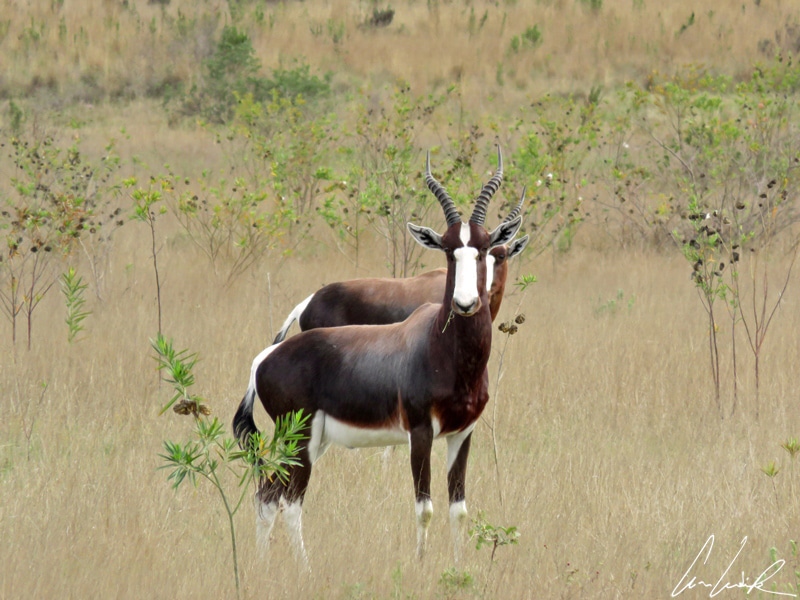
Bontebok National Park, Bonteboks
Although the Bontebok was near extinction in the 19th century, this preservation project is a success. The park now houses a large number of Bonteboks as well as other antelopes and Cape mountain zebras which are characterized by black and white stripes, unlike plain zebras that are striped white and black with a neat mane and manicured up to the end of their hooves… And vertical stripes, as Obelix says, “everyone knows that vertical stripes make your body look thinner“. The fauna of the place does not stop at stripes. There are also feathers (checks are not fashionable this year ?). We cross paths with a guinea fowl Numidia or helmeted guinea fowl. It is easily recognizable with a large body and a small blue head. The body plumage is gray-black and dotted with white flakes, the head unfeathered. Personally, I prefer stripes… but the variety of tastes found in nature as it is well known !

Bontebok National Park, Cape mountain zebra
The park is also home of an abundance of fynbos (in Afrikaans, fynbos means “wild bush” or “maquis”) among which is a 10-foot height native aloe called the Cape Aloe and Aloe Ferox (known for its yellow and bitter sap, with laxative properties ?). All these emotions work up quite an appetite. As Michel Déon says, “Pour bien aimer un pays, il faut le manger, le boire et l’entendre chanter“, which can be translated as “To love a country, you must eat it, drink it, and hear it sing“. Tonight the menu offers crocodile sashimi, carpaccio of Koudou, and samosas of warthog, followed by a Springbok tenderloin; all washed down with a good bottle of Pinotage… But if you want to savor the flavor of the country, many South Africans would tell you must taste Biltong, a form of dried, cured meat… Biltong is not found anywhere else in the world. It consists of thin strips of beef, salted, possibly marinated, and dried for preservation. It is related to American beef Jerky. All types of meat are suitable for Biltong: rump of wildebeest, warthog loin, ostrich steak and beef Rib Eye !
Ah, these zebras are proud of their stripes. We can almost continue our visit in black and white, which is appropriate as the next stop is Boulders Beach on the Indian Ocean near Cape Town, a residential area and beach home to some 2,200 penguins… So we remain in a B & W atmosphere … The penguin is about 28 inches tall and weighs about 7 pounds with a black upper body and a white underpart. Their distinctive black and white coloring is a form of camouflage, called countershading. The scientific explanation is as follows… the black dorsal makes them hardly visible to predators looking down into the dark water while their white ventral is less visible to underwater predators looking up – QED. Ok, for the explanation but “if they were all white, we could not see them on the ice floe“, is also a valid comment. Shortly before our trip, many chicks had been born. It is easy to spot them with their little down (not waterproof!) The penguin is far from stupid… it builds its nest in a burrow to protect itself from predators and heat. The proximity of man offers many artificial burrows… The only discordant factor is that while we have left behind the neighing of zebras, we have moved on to braying (no one warned us that there were donkeys around ?)… These penguins have been called “Jackass Penguins” because they sound like a donkey … and with 2,200 on a beach… imagine the cacophony !
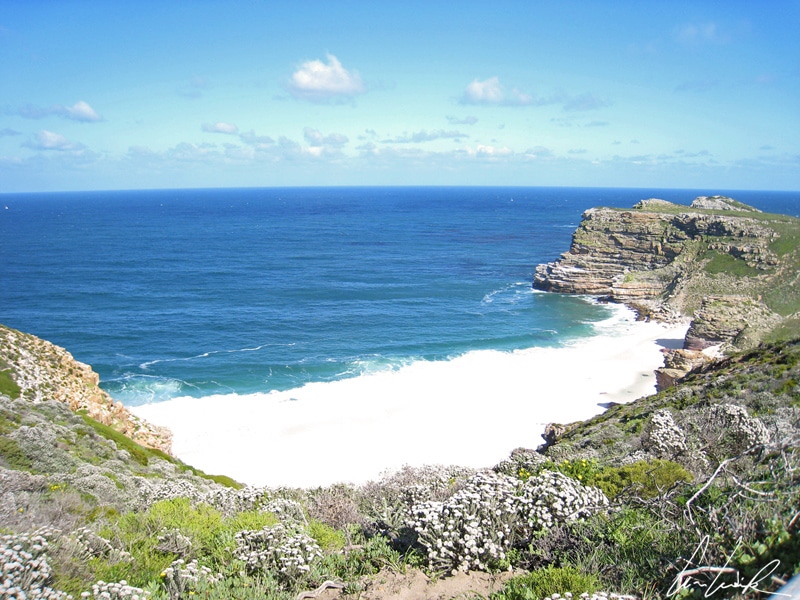
The Cape of Good Hope
Just a bit of silence… We are at the southern end of the Cape Peninsula at the Cape of Good Hope Nature Reserve (the Cape was named by the Portuguese sailor Bartholomé Diaz in 1488). The Cape of Good Hope is surrounded by vast spaces, rich fauna, deserted beaches and rugged landscapes. Contrary to what many believe, the Cape of Good Hope is neither the southernmost tip of Africa nor the point of division between the Atlantic and Indian oceans even though it lies in the southwest corner of the Cape Peninsula. Instead, the Cape of Needles or Cabo das Agulhas 90 miles southeast of the Cape of Good Hope is the southernmost point of the African continent and the dividing line between the Oceans. The Cape of Good Hope nonetheless remains a psychologically important point for navigation because it is at the junction of contrary sea currents, which create major storms ! In fact, Bartholomeo Diaz named it Capo Tormentosa – Cape of Storms. Just over one mile to the east is Cape Point, famous for its two lighthouses and breathtaking view of the Ocean. The first lighthouse dates from 1860, built 810 feet above sea level, it can be seen 42 miles out at sea. Unfortunately, this lighthouse was totally ineffective for its beam was often obscured in clouds or fog, normal weather in the region! On 18 April 1911, a Portuguese liner named Lusitania ran into Bellows Rock below the lighthouse and sank. After that accident, a second lighthouse was built only 285 feet above sea level. One can reach the lighthouse on foot via a paved path and also via a funicular named the “Flying Dutchman Funicular” after the legend of a ghost ship “The Flying Dutchman” (see the series of fantasy films Pirates of the Caribbean).
Against the background of these grandiose cliffs, we encounter the largest of the antelopes, the Common Eland also known as the Southern Eland or Eland Antelope. The animal can weigh up to 2,000 pounds, but, contrary to its appearance, can run up to 25 miles per hour and maintain a speed of 14 miles per hour for several hours at a time. It can jump up to 9 feet. The physical aspect of the Common Eland can be gleaned from its scientific name Taurotragus Oryx: the Greek Tauros for bull combined with Tragus for a male goat (referring to the tuft in the eland’s ears and also to its resemblance to horse’s ears or a deer’s muzzle) and Oryx from the Greek orygos for the pickaxe, the pointed horns. The eland is easily domesticated for meat and milk production. Its milk contains three times more milkfat and two times more protein than cow milk.
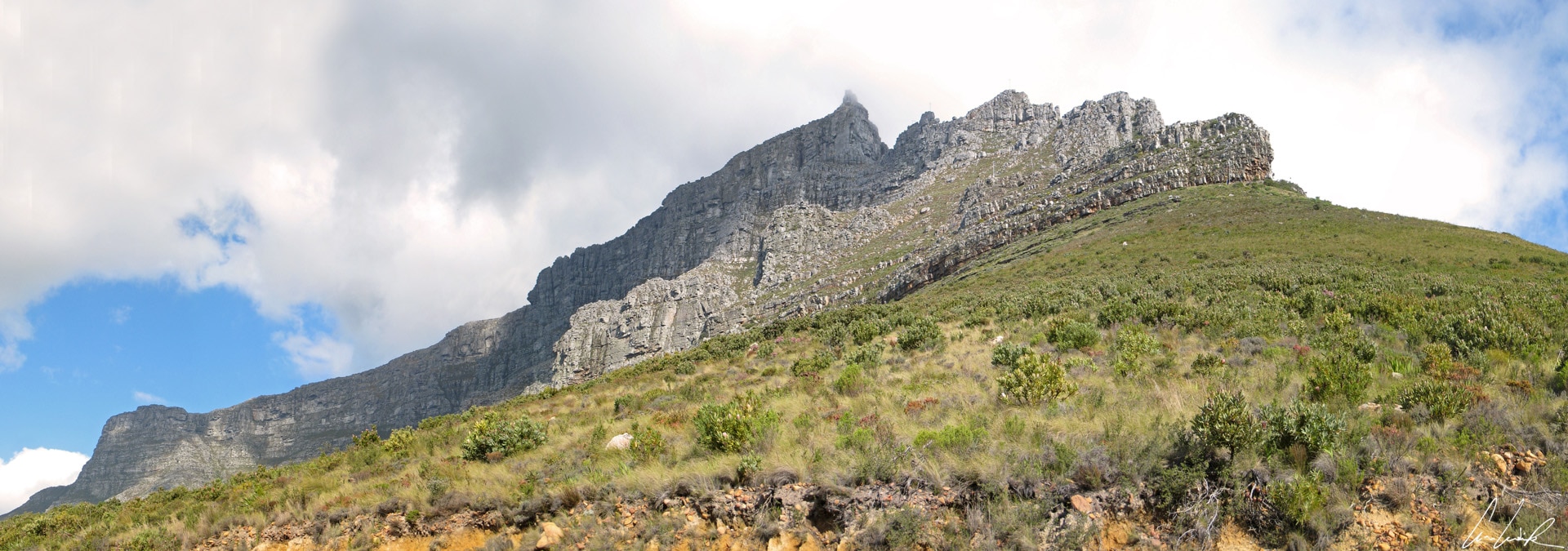
Cape Town, Table Mountain
Destination Cape Town, a little paradise lost between sea, mountains, and two oceans. Cape Town is the second-most populous city in South Africa after Johannesburg. The ubiquitous wind reminds us every day why the first explorers baptized this country “the Cape of Storms.” However, Cape Town has a favorable and pleasant Mediterranean climate. Some even think that the Cape naturally enjoys a balance or “Fen Shui” because of the unique configuration of rugged mountain ranges, extensive coastline, and exposure to sunshine and wind. Right in the middle of the Cape the famous “Table Mountain” rises to 3,000 feet to its flat-topped summit. Table Mountain is one of the oldest mountains in the world, over 360 million years old. As you will easily have guessed, its name comes from its form that strangely resembles a tabletop. A thin strip of cloud forms frequently at the top, known as the “tablecloth”. Table Mountain is one of the landmarks of Cape Town and the main tourist attraction. Tourists can walk or take a cable car (Swiss design !). We preferred to climb the Lion’s Head on the far side of the mountain in the sun, which does not spoil anything, for a panoramic view of Table Mountain and the entire bay.
We now leave the Cape Peninsula, a city full of history and a biodiversity hotspot, including slums such as Khayelitsha, now the largest in South Africa with a population estimated at 1.5 million… this is also South Africa !
Salani kahle.
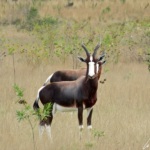
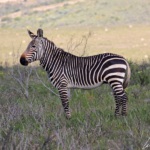
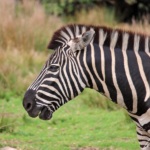
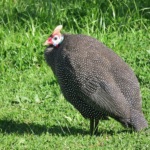
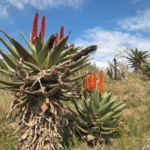
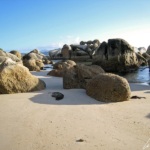
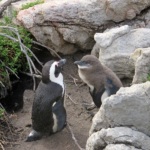
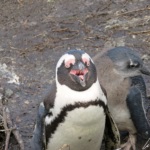
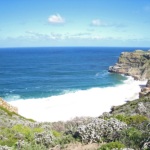

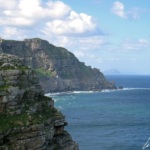
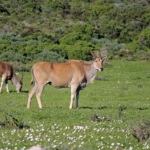
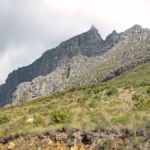

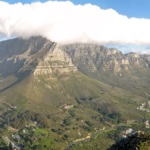


Simply stunning photos! I love the detail you put into this post, so informative and useful. I didn’t make it to this part of South Africa when I was there last year, but am hopeful to return soon so this is a great for me to read 🙂
Thank you. South Africa is full of so many amazing places to see and great people to meet ! I would also love to return in order to explore the Eastern part 🙂
Bontebok National Park is home to so many types of animals despite being quite small! And the Cape of Good Hope looks absolutely beautiful. Hearing all those penguins must have been a riot!
Indeed, the Bontebok National Park now houses a large number of Bonteboks as well as other antelopes and Cape mountain zebras… The preservation project was a real a success:-) Haha, the 2,200 Jackass Penguins on a beach… a real cacophony :-). Hope you can listen to them one day ! And the beauty of Cape of Good Hope just leaves you speechless.
Wow! Great post. Amazing pictures. South Africa is on our bucket list. I’m saving your post for when I visit.
Vrithi Pushkar
http://www.epicuriouspassport.com
Thanks 🙂 South Africa is full of so many amazing places to see, great people to meet, delicious food to eat etc. so definitively see it by yourself at least once !
Lovely photos! I had never even heard of this park, although I guess SA has so many. I do remember my trip to SA in 2006 and would love to return someday.
There is so many places to see in SA ! I would also love to return probably to visit the Eastern part 🙂
Your narrative approach to travel stories is beautiful. I love that you included poetry too, and that you focus so much on wildlife
Thank you :-). I like travelling the world, seeing things with my own eyes, experiences on my own skin… Through my stories, I hope to inspire adults of all ages to be adventurous and to enrich their lives by captivating the power of travel and cultural exploration… I am convinced that we are lifelong learners and we can reach our full potential through continuous exploration the world…
Wow these photos are SO beautiful! This looks like such a fun trip!
Somebody said “Travel is the only thing you buy that makes you richer”. I have never felt so great joy, love and adventure than while travelling to South Africa :-).
I want to visit Cape Town right now, the cape of good hope and the Boulder beach sounds awesome.. great photographs.
Cape Town is definitively a little paradise lost between sea, mountains, and two oceans :-). And I definitively love the Cape of Good Hope which is surrounded by vast spaces, rich fauna, deserted beaches and rugged landscapes… An extraordinary adventure I recommend to you !
oh my gosh your photos are amazing!! I love all of the animals!! Looks like an amazing place and I hope I can visit soon! Thanks for sharing 🙂
Thank you :-). Make the most of your discovery, get rid of your preconceived notions about South African history and society, take your binoculars, try to spot “Cheetah” and prepare to travel in an ever-surprising country… surprising in its diverse fauna !
I’ve been wanting to go to South Africa and your post just makes an even stronger case for visiting! Great details about the penguins 🙂
Between oceans, mountains, deserts, and flowers, prosperous cities and townships, the Republic of South Africa is really a nation made up of the colors of the rainbow. You will travel in an ever-surprising country… surprising in its geography as well as in its diverse flora and fauna !
Such a beautiful post…the photos, the animals, the history. I loved it. Jackass penguins?? LOL. This is SOOOO high on my list of places to go.
Thank you. The 2,200 Jackass Penguins on a beach… a real cacophony :-). Hope you can listen to them soon LOL !
Cape Town and its surrounding were one of the most beautiful things I’ve seen till now! Simply amazing! Good article 😉
Cape Town is one of my favorite place too ! A little paradise lost between sea, mountains, and two oceans 🙂 So beautiful…
This is so helpful, I’m looking into taking a trip to South Africa soon and will definitely refer back to this! The wildlife there sounds amazing 🙂
South Africa is definitively surprising in its geography as well as in its diverse flora and fauna 🙂
Beautiful photos! Heard so much about South Africa, even my colleague asked me to visit so he could bring me around. I really want to visit the table mountain. Will be referring back to this post when I’m planning for the trip.
For sure, you have to visit Table Mountain, the oldest mountains in the world ! Table Mountain is one of the landmarks of Cape Town and the main tourist attraction 🙂
What a fascinating post – I learned so much, like the bonteboks were brought back from the brink of extinction, and that Cape Town’s geography and climate are all in perfect harmony (although I have heard about the jackass penguins!). It sounds like you are having an amazing experience exploring incredibly beautiful landscape. I have been obsessed with South Africa for a long time and hope to get there soon.
South Africa was really an incredible journey ! Cape Town and its surrounding are simply amazing 🙂 and of course I really appreciated the favorable and pleasant Mediterranean climate of Cape Town !
Stunning photos! I’ve heard lovely things about SA and i really hope to visit soon.
Thank you 🙂 I wish you will get there soon. This is a lovely country !
I love the photos, and I’m glad I learned about the Bonteboks. I had never seen them pictured before. Thanks for teaching me about the area.
Wow, this place looks amazing! It’s now on my list, and i can’t wait to visit. Thanks so much for this great overview (i never put together why those penguins were called “jackass penguins” lol)
Cape of good hope looks incredible !! And those wild animals you saw in park !! Wow I am so jealous! Can’t wait to visit Africa one day !
Look at all the amazing wildlife. This world is truly beautiful and we need to remember to keep it that way. So much disaster and hate in the world 🙁
Does that mean that you have visited all the bigger parks? This seems like a very nice place to go for a day. And I am missing a picture of the lighthouse! Maybe for the next post? Thank your for sharing these amazing pictures and post!
I’m from South Africa but I haven’t been to Bontebok National Park yet 🙂 . I have seen bonteboks though and I think that they’re beautiful. I love Boulders Beach and the other areas in the Cape you went to though. Glad you enjoyed it.
The photos are excellent! Just brought me there to the speed of light! There are also so many useful recommendations I would definitely keep in mind when visiting South Africa.
Those zebras are gorgeous! I would also love to see the bontebok. Was just in Namibia a few months ago and now I’m dying to go back to southern Africa.
South Africa is so huge and so diverse, you really need six months to explore it as a visitor. I had no idea there were so many parks there!
This is such an incredibly informative post, I love all the extra details about the different kinds of animals! And the food sounds very adventurous… but you make it sound yummy enough that I want to try!
Wow your photos look stunning. I am dreaming of seeing those exotic animals so close. Merci pour partager cm cette expérience
I love how detailed this post is, so informative! I actually thought Cape of Good Hope is the southernmost point of Africa so thanks for clearing that out 😉 Southernmost or not, it looks like a stunning place to explore.
Great storytelling and lovely photos! I’ve always wanted to go to South Africa.. But haven’t made it there yet. The ‘Jackass’ penguin looks a lot like the Magellanic penguins I saw in the Falkland Islands. I wonder if they’re the same…?
I love your wildlife photos! So stunning, would love to go one day!
Absolutely beautiful photos and loved reading about your experiences! I’d love to go some day – my grandmother used to lead tour groups in Africa in her 70’s so I feel like I need to get on it!
I never heard of a bontebok before but it’s a good looking animal! I would love to visit this place. I love nature. Boulder beach looks beyond incredible!
Ok the time has come for you to tell me…what filters are you using? What is your setup in Lightroom???? Your pictures are so damn gorgeous! They really give me the wanderlust.
That animal is certainly breathtaking! would love to visit this place once! Nature is something which I look forward to everytime! thanks for your article, I finally got a new place to add it to my list! Cheers!
Sounds like an absolute dream experience! I love how your photos turned out too. Looks like I need to plan a trip soon!
Indeed, this is an amazing experience 🙂 It is a beautiful spot, with unpredictable weather, baboons that will boldly try to raid your car, and adorable penguins playing in the ocean. If you are traveling to Cape Town, don’t miss this amazing place!